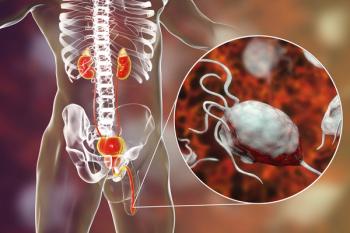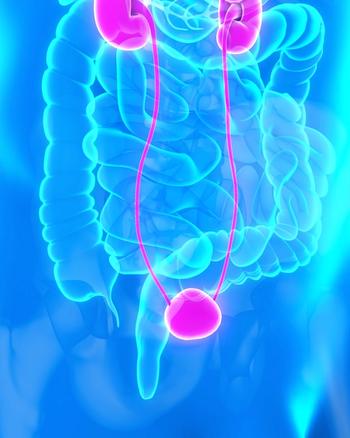
FDA Grants Fast Track Designation to Novel PIK3α Inhibitor in Breast Cancer
Combination therapy of ETX-636 plus fulvestrant is being administered to patients with HR–positive, HER2-negative breast cancer in a phase 1/2 trial.
The FDA has granted fast track designation to ETX-636, a pan mutant-specific allosteric PI3Kα inhibitor and degrader, as therapy for patients with PIK3CA-mutated, hormone receptor (HR)–positive, HER2-negative advanced breast cancer, according to a press release from the developer, Ensem Therapeutics.1
ETX-636’s selectivity may reduce the risk for hyperglycemia and other wildtype PI3Kα-related adverse events (AEs) vs other non-mutant selective PI3Kα inhibitors; the agent also causes proteasome-dependent degradation of mutant PI3Kα while sparing wildtype protein.
The developers noted that ETX-636 was engineered using Ensem’s Kinetic Ensemble® platform, such that it can optimally fit into a specific allosteric binding site in p110α and selectively inhibit multiple activating mutant forms of PI3Kα.
Currently, ETX-636 is being evaluated in a first-in-human, open-label phase 1/2 trial (NCT06993844) assessing the preliminary antitumor efficacy, safety, tolerability, pharmacokinetics, and pharmacodynamics of ETX-636 in patients with advanced solid tumors harboring a PIK3CA mutation.2
"Patients with advanced [HR-positive/HER2-negative] breast cancer harboring PIK3CA mutations have poor prognosis, and there is an unmet need for therapies targeting this population that are safer and more efficacious than the current FDA-approved non-mutant selective treatments," stated Shengfang Jin, PhD, chief executive officer and co-founder of Ensem Therapeutics, in the press release.1 "We are appreciative that the FDA has recognized ETX-636 as a potentially important treatment for this indication and we remain laser-focused on demonstrating its benefit to patients in our current clinical trials."
In part A of the trial, ETX-636 was administered as monotherapy at escalating doses to patients with advanced solid tumors. In part B, patients received escalating doses of ETX-636 combined with fixed-dose fulvestrant (Faslodex) in patients with HR-positive, HER2-negative locally advanced or metastatic breast cancer. Part C was planned to be a combination therapy expansion in patients with HR–positive, HER2-negative locally advanced or metastatic breast cancer.
Patients received ETX-636 as an oral tablet in escalating doses in 28-day cycles; fulvestrant was administered as a 500-mg fixed-dose injection 2 weeks apart in the first 28 days, then monthly.
Eligible patients in the trial had a metastatic or locally advanced and unresectable solid tumor that progressed on or after at least 1 available therapy. Additionally, patients had a tumor harboring an activating PIK3CA mutation detected in either tumor tissue or circulating tumor DNA, at least 1 measurable lesion per RECIST v1.1 guidelines, an ECOG performance status of 0 or 1, and adequate organ function.
In parts B and C of the trial, patients had confirmed metastatic or locally advanced HR-positive, HER2-negative breast cancer not amenable to surgical resection with curative intent and must have received at least 1 prior CDK4/6 inhibitor and at least 1 prior anti-estrogen therapy.
Exclusion criteria included history of a solid tumor or hematological malignancy that is histologically distinct from the cancers being studied, symptomatic brain or spinal metastases, a known or suspected history of untreated/uncontrolled central nervous system involvement, diagnosis of diabetes mellitus type 1 or uncontrolled diabetes mellitus type 2, receipt of local or systemic anticancer therapy or investigational anticancer agents within 14 days of study treatment, unresolved toxicities from previous anticancer therapies, and receipt of radiotherapy outside the target tumor lesions within 14 days of starting treatment.
The trial’s primary end points were to evaluate the proportion of patients who experienced at least 1 dose-limiting toxicity, and the incidence of AEs and treatment discontinuations due to AEs, with ETX-636 monotherapy in part A and ETX-636 plus fulvestrant in part B; additional primary end points included identifying the recommended phase 2 dose in part B so that it could be explored in part C, and to evaluate the efficacy of the combination therapy in part C.
Secondary end points included pharmacokinetics, pharmacodynamics, preliminary efficacy of both therapies in part B, changes in fasting blood glucose, and changes in longitudinal glucose metabolism.
References
- Ensem Therapeutics announces ETX-636 granted fast track designation by the FDA for advanced breast cancer. News release. Ensem Therapeutics. October 1, 2025. Accessed October 2, 2025. https://tinyurl.com/4huzvyfr
- Phase 1/2 study of ETX-636 in participants with advanced solid tumors. ClinicalTrials.gov. Updated September 17, 2025. Accessed October 2, 2025. https://tinyurl.com/2zr597mc
Newsletter
Stay up to date on recent advances in the multidisciplinary approach to cancer.






















































































